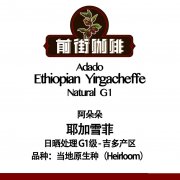The cradle of coffee-producing countries in Asia

Influenced by Chinese culture, Asian tea culture flourished, while coffee was weak in comparison. However, near the equator, because of the tropical climate suitable, but also produces a lot of world-renowned top coffee.
Since coffee was introduced to Asia, it has shown its strong and steady side. Asian coffee beans have a dense texture, a strong sense of thickness, a strong sweet and round taste, and a conservative aroma and acidity. However, the unrestrained feeling is not the strength of Asian beans. Asian beans emphasize the large and thick taste like the bottom of the pyramid; it is the aroma of the coffee that has not yet been tasted. Asian coffee culture is also beginning to take shape on a large scale.
From the appearance point of view, Asian beans are mostly washed and semi-washed, so the particle size of raw beans is also very uniform, some semi-washed raw beans will be darker in color than other processed raw beans, in fact, high-quality Asian beans can also show sufficient level of aroma and soft fruit acidity under light baking.
It is generally known that Indonesia, Yemen, India, Vietnam and Papua New Guinea in Asia have selected coffee production; in fact, as early as more than 100 years ago, coffee was planted on the land of the Chinese nation, but the tea culture is deeply rooted, so we can only sigh: raw tea, why raw coffee. Before we talk about coffee in Asia, let's talk about coffee grown on our own land.
Taiwan (China):
Coffee cultivation in Taiwan has a long history. Both the British and Japanese once planted coffee trees in Taiwan. By 1942, the coffee area on the island had reached more than 1000 hectares, which was the largest period. Later, when the Pacific War broke out, agriculture was mainly based on grain cultivation, and coffee plantations were mostly converted. By 1953, only 4.9 hectares remained. Since then, due to many political and economic factors, it has not continued to promote and decline, until recently because of the coffee craze, people began to re-invest.
Hebao Mountain in Gukeng, Yunlin County, Huisun Forest Farm in Nantou County and Dongshan Township in Tainan County are several famous coffee producing areas in Taiwan Province at present, most of which are Arabica species. Taiwanese coffee has a moderate texture, low acidity, and a slight herbal flavor, somewhat similar to a combination of South American and Indonesian beans. At present, Taiwan coffee production is not high, but because the popularity of Taiwan coffee fever makes many people want to kiss, so prices have been high, and even use the import mouth to impersonate the situation.
Let's look at the rest of Asia.
Indonesia: Famous representative coffee: Java, Sumatra Mandheling
Indonesia produces coffee beans mainly in Java, Sumatra, Sulawesi and other three islands, are volcanic terrain.
Indonesian coffee beans are generally considered to have a strong aroma and low acidity, with a slight taste of Chinese medicine and earth. Mandheling produced in Sumatra mountains is world-famous and rich in texture. Top quality mantelin, light baked with a very clean taste, rich acidity and sweetness; deep baked with a very deep texture and rich taste.
Robusta beans grown in Java have a unique smell and are often used as one of the recipes for espresso because of their rich oil. Coffee from Sulawesi is rated as having a special herbal flavor, deep and clean.
In particular, there is a special animal in the mountains of Indonesia called the civet. Because it allows Indonesia to produce one of the world's most expensive coffees-Kopi Luwak, Kopi(Indonesian for coffee), a common Indonesian name for civet. The cat loves coffee berries, and the hard coffee beans end up being excreted because they can't be digested. During the passage through the digestive tract, coffee beans undergo fermentation to produce a unique and complex aroma, making many consumers like this coffee with a special aroma. But because production is so low, prices are high, costing hundreds of dollars per pound.
India's famous coffee: Monsooned Malabar
Indian coffee is very mild in taste, very low in intensity and acidity, with some spices, and of course the earthy taste common to Asian beans, which is usually used to mix with Espresso recipes. In fact, Indian beans taste like Sulawesi beans or Sumatra beans, only not as thick. Indian coffee does not sell well in the international market, and the main market is in India. Sun-treated Indian beans are called Cherry, water-washed Arabica beans are called Plantation Arabica, and water-washed Robusta beans are called Parchment Robusta. In addition, rainy season beans and aged beans will increase the consistency of coffee taste and dark chocolate flavor of aged beans especially so.
Indian coffee is grown mainly in the western Ghats of southern India to the Arabian Sea area, more well-known are sold under the name of Maisuo and Malabar. Monsoon Malabar is a coffee with Indian characteristics. This kind of coffee was exported to Europe from Malabar coast in those years. The appearance and taste of raw beans changed after being blown by sea wind for a long time during ship sailing, and became the taste that Europeans used to and liked. This later became a special method of processing coffee beans, after harvest, especially in the wet monsoon for a few months to allow it to turn yellow and white color and reduce the acidity, that is, we buy monsoon Malabar (monsoon Malabar).
Vietnam:
Vietnam is also one of the top coffee producers in the world. The vast majority of coffee trees in Vietnam today are Robusta species, as leaf rust in the mid-19th century wiped out Arabica coffee trees in Vietnam and replaced them with Robusta species that are resistant to leaf rust.
Robusta coffee beans have a distinctive aroma and bitterness, and are higher in caffeine than Arabica. Also because of the high extraction ratio, it is often used to make instant coffee, canned coffee, or blended in three-in-one coffee, etc.
In recent years, India has also begun to grow Arabica coffee trees, which are more dedicated to coffee production, but there is no development in the fine coffee market. The Vietnamese coffee we often hear in conversation sometimes refers to the method of boiling ice drops, which is different from the coffee beans mentioned here. Don't confuse them.
Important Notice :
前街咖啡 FrontStreet Coffee has moved to new addredd:
FrontStreet Coffee Address: 315,Donghua East Road,GuangZhou
Tel:020 38364473
- Prev

Why do coffee beans have such a long name? The meaning of the name of coffee bean
Jiaxiang Guide: why do coffee beans have such a long name? Why is there a single item, deep roast and Italian style of coffee? How is this distinguished? When you walk into a coffee store or open the website of a professional coffee and bean seller, you may be confused by the dazzling variety of coffee names. Why do coffee beans have such a long name? Why is there a single item, deep roast and Italian style of coffee? This is
- Next

How to judge the freshness of coffee beans from their appearance?
Freshness is the life of coffee, how to determine the freshness of coffee beans? There are three steps: smell, see, and peel. Smell: put the coffee beans close to the nose and smell them deeply to see if you can clearly smell the aroma of the coffee beans. If so, the coffee beans are fresh enough. On the contrary, if the aroma is weak, or the greasy smell has begun to appear, the coffee beans are completely stale.
Related
- Guji coffee producing area of Guji, Ethiopia: Humbela, Shakiso, Wulaga
- What is the most expensive variety of Qiloso in BOP multi-variety group?
- How to store the coffee beans bought home?
- Why are Yemeni coffee beans so rare now?
- Ethiopian Sidamo all Red Fruit Sun Sun Santa Vini Coffee beans
- SOE is mostly sour? What does it mean? Is it a single bean? what's the difference between it and Italian blending?
- Is Italian coffee beans suitable for making hand-brewed coffee?
- How to choose coffee beans when making cold coffee? What kind of coffee beans are suitable for making cold coffee?
- Just entered the pit to make coffee, what kind of coffee beans should be chosen?
- Can only Japan buy real Blue Mountain Coffee? What are authentic Jamaican Blue Mountain coffee beans?

